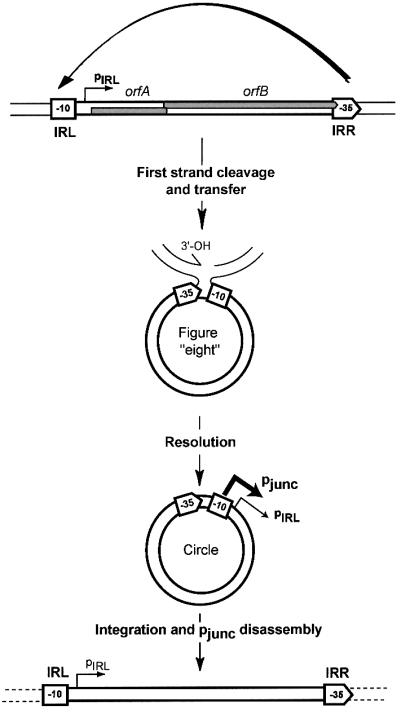
Fig. 1. IS911 circle formation. IS911 is shown in the top part of the figure together with its two overlapping reading frames, orfA and orfB (shaded boxes). The left and right terminal inverted repeats, IRL and IRR, are shown as a square and pointed box, respectively. The component –10 and –35 promoter elements of pjunc within these ends are also shown together with the weak pIRL promoter and the direction of transcription. In a first step, single-strand cleavage and transfer from one IR to the other is catalysed by OrfAB produced from the weak pIRL promoter. This is indicated at the top of the figure by the curved arrow. In this case, the right end (IRR) is shown attacking the left end (IRL). The resulting figure-of-eight form is drawn below and shows the free 3′-OH group generated on the flanking donor DNA sequence. In a second step, second-strand circularization occurs by an as yet undetermined mechanism involving host functions, but independent of transposon proteins (Turlan and Chandler, 2000). The resulting IRR–IRL junction carries suitably placed –35 and –10 hexamers, separated by the canonical 17 bp spacer and form a strong pjunc (bold arrow) promoter able to promote high levels of production of IS911 proteins. Integration of the circle results in disassembly of the promoter restoring low levels of expression from pIRL.
